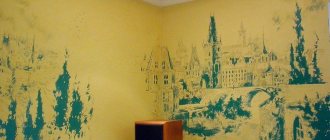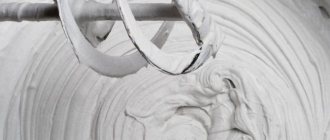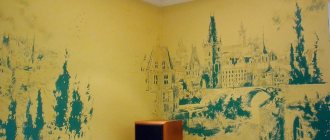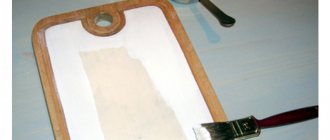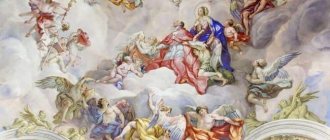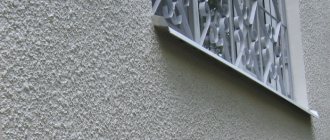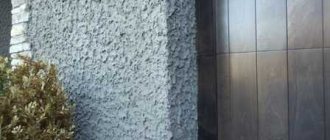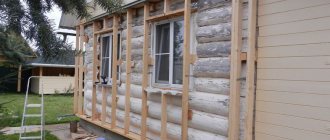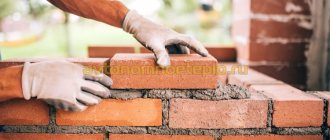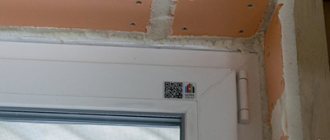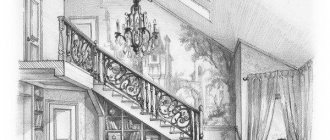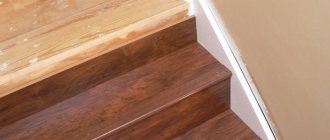Essence of the method
Fresco painting was already popular in the ancient world, of which a lot of evidence has been preserved in the form of paintings on the walls of residential buildings and temples that have come down to us. In the Christian world, the art of fresco was improved and reached its peak during the Renaissance.
Initially, the fresco technique involved painting walls or ceilings on wet plaster. The term fresco itself in Italian means “fresh”. This is the main feature of the technique: when the lime contained in the plaster dries, a thin and durable layer is formed on the surface, protecting the design from destruction.
Painting on wet plaster is often used in combination with other methods. For example, mixed media allows the use of tempera glue painting. In any case, special importance is attached to the preparation of the walls. The finish will not last long if the plaster layer is made or applied incorrectly.
Application of decorative plaster
You can make paintings from decorative plaster with your own hands. They are placed on the walls and ceiling of the apartment. To work you will need:
- level;
- plumb line;
- different spatulas;
- grater;
- Master OK;
- rule;
- tool for applying relief.
You can apply artistic plaster to the surface with your own hands in the following way:
It is usually assembled using a pin and notch, i.e. one part has a protrusion and the other has a hole. Sometimes they put up bridges, but they usually remove them. You can also put in spikes. Roughing or troweling tools: These are used to remove material.
Thrown percussion: These serve to strike a material or another instrument, which in turn hits the material. Pots: Used for finer strokes, especially details. A quiet blow: they beat me up. Pointers or punches: These are metal and are usually prismatic or cylindrical, terminated in a tip. They are used as a first approximation to the form. This is one of the oldest instruments.
- the surface is wetted with clean water;
- use a spatula to throw a little plaster onto the wall;
- after filling the entire area, the solution is leveled with a grater;
- Using a level, the correct application of the solution is monitored.
The wooden surface is pre-filled with shingles, which act as cladding. Its cells are 4x4 cm. Before applying the material, they are moistened with water. In some cases, shingles are replaced with mesh to save time. It can be made of various materials: steel, copper, galvanized iron, plastic, twisted wire. The plaster is applied using the usual methods. If you plan to apply a panel of decorative mixture to a section of a wall or ceiling, there is no need to level the last layer. But there should be no large bumps or depressions on the surface.
Chisels: It ends in a straight mouth, with a sharp bevel. The chisel is used on the surface left by the pointer. Serrated chisels. Scissors. Drill bits or drill bits: These are used to make holes. Regular drill: ends at a more or less circular point to make holes.
Arch Bit: This is a regular drill bit but with a rolled rope which in turn is attached to the arch. By turning the bow, the rope moves and turns the bow. In Greece since the 5th century, tretine has also been used for carving. Also used to create very deep folds. Drill holes first with a trephine to mark the path, and then the chisel goes through so that it no longer protrudes from the path of the fold.
To make paintings from plaster, you need to have certain tools. The most common of them is a roller, on which there is already a simple pattern or relief. It is moistened in water and rolled over the plastered area. If, after the wall has dried, you also apply paint, you can get a beautiful plaster panel.
Polishing tools: or finishing. Basswood or Rasps: Metal sheets with grooves. Very small files are called mouse files. The file is used to remove marks from other tools. They are also suitable for touching, such as bending or rounding. The file leaves a matte stone finish.
He puts on a cloth and wipes himself. They can be used to dry or dampen the stone to create a smoother polish. This provides brightness and gives textural effects as you polish more or less. One that the artist performs directly with his tools. This is the most primitive system. This is a difficult method because you must have excellent technical ability. Another problem is that if you deduct a piece of stone that you shouldn't have back, no agreement, you won't be able to get the material back.
The next tool for obtaining relief is a stencil. It can be made in the form of stamps and combs. The design is applied in approximately the same way as with a roller. But these tools cannot be called the only ones. It is quite possible to create a pattern on plaster with your hands, a plastic bag or a foam sponge. The surface must be damp. Artistic plastering of walls can be done using special compounds, which themselves leave their own pattern on the surface. The plaster composition of the bark beetle has a pattern in the form of traces left by the beetle of the same name. Such patterns look great on walls and are especially resistant to temperature changes, humidity conditions, and mechanical stress.
It's slow work and it improves the performance significantly. It requires a lot of physical effort and you must be in good shape. Beveled size: This is a relief in two planes: one from the figure and one from below. Draw what you want to do and lower the bottom part. The numbers remain at the same level as the original block.
Carving on planes: this is a normal relief. The profile is drawn and then lowered from the most protruding to the smallest, with each protruding part representing a plane. He usually works with a block, inclined or horizontal, because in the Middle Ages sculpture was considered to be visible from the front. The sculptor works on the block as if it is a relief, he does not think that he will be seen from behind. Sometimes even the back is hollowed out to reduce weight.
Marble plaster leaves relief paintings on the wall. This method has the following features:
- high strength and durability;
- fire safety;
- resistance to environmental influences.
Fur coat-like surface finishing is often used. It is done by spraying using a brush or broom. As a result, a certain picture or panel of decorative plaster is formed on the wall. Any of the above methods can be used on external and internal wall surfaces. This will not be a painting on the wall, but creating something like this with your own hands is quite simple.
In Greece and Rome and during the Renaissance, the stone works vertically, as it will see the entire sculpture. The block is drawn on all four sides and then lowered. Abandoned from mannerism. The last great sculptor of erect stature is Michelangelo.
Size according to drawings. You should always have a 3D model because the dot pattern consists of taking some benchmarks from that model and feeding it into the block. The model does not have to be the same size as the work. Typically the original model is cast and the second model is used. This is done because if the model is broken, damaged or you want to repeat the work at another time, you will always have the first model in good condition.
Pros and cons of the method
Interior wall painting has the following advantages:
- The wall composition is created manually, so the design of the room becomes unique.
Wall decoration with a sepia effect Source stroyfora.ru
- The technique allows you to create a design of any complexity, from a simple floral ornament to a detailed landscape.
- The right theme will help you fit the fresco into any interior.
Painting on plaster has several disadvantages:
- The performer must have artistic talent and a sense of proportion.
- Even with the talent of an artist, the work is difficult to complete, since the drawing must be applied quite quickly.
- You need to know how to properly prepare the base; The durability of the image directly depends on this.
- Ordering painting on plaster is not a cheap service. The cost of application is calculated in square meters and starts from 1500-2000 rubles per square, depending on the complexity of the image, the professionalism of the artist, the paint used, and the technique of execution.
- The application process can take a long time.
Applying plaster to the surface
The plaster mortar is applied to the prepared wall in the following order:
- the surface is moistened one day before laying the composition;
- 1.5 hours before the start, moisturizing should be repeated;
- the first layer of plaster mortar with a thickness of no more than 8 mm is applied;
- for greater adhesion, wavy lines are applied every 40 mm;
- the plaster is dried for two weeks;
- again moisten the surface generously until it is completely saturated with water;
- apply an intermediate layer of plaster;
- after all layers of the solution have dried, the finishing layer is applied in small parts, and a drawing is immediately made on it;
- the operation is repeated to apply a new fragment of the pattern.
Before the plaster with a pattern dries, there should be no drafts or temperature changes in the room. For more fruitful work, it is recommended to prepare the necessary materials and equipment:
To obtain quarry material, excavations are made in the ground, wedges of wood are inserted, which are wetted so that they swell and tear the rock. In these cracks the beak is inserted and the material is removed. It then becomes more or less a bucket of stone. After this, thinning is carried out, that is, the first sketch of the sculpture, the shape is approximated. Roughing can be done in a workshop or in a quarry. In ancient times, this was done in a quarry to take the weight into the block and carry it better.
There can be one or several sizes. Monolithic pieces are more valuable due to their complexity. Sculptures are made from various blocks because they are cheaper and easier to transport. Contracts usually specify how many pieces the sculpture will be. Their execution is also faster because several sculptors can work. If a part is broken, it can be replaced. Colossal sculptures, or those that have parts in extension, are composed of several parts. When they are produced sequentially, they are also produced in pieces.
- image on paper;
- acrylic water paints;
- solution;
- tools.
Fresco creation technology
From the outside it may seem that creating wall paintings is a fairly simple and understandable process, consisting of the following stages:
- The wall (or ceiling) is covered with fresh plaster.
Accent wall design Source lastanza.ru
- While the plaster remains wet, the outline of the design is applied to it, and then, using water-soluble paints, the plot (or ornament) itself is applied.
- When the plaster dries, the image acquires a characteristic depth. The effect is formed due to the fact that lime absorbs the pigment in a specific way.
The apparent simplicity of the process is deceptive. There are subtleties at every stage of creating a fresco; What is important is the preparation of the base, the proportions of the plaster mixture, and the technique of applying dyes.
See also: Catalog of companies that specialize in finishing materials and related work
painting
As you know, lime solution has an alkaline reaction, therefore, when mixing paints, alkali-resistant pigments are needed. What kind of pigments are these: ocher, cinnabar, ultramarine, this will also include manganese peroxide, lemon, umber, as well as burgundy, scarlet, etc. Although in relation to today there is no point in even listing the pigments: there are many more of them. The main thing when buying paints is to look at their solubility in water and their resistance to alkalis.
Attention! The pigment needs to be tested. It needs to be diluted in the composition with which you will work. For example, in water and lime. And then the pigment is applied to a previously prepared piece of plaster. For beginners, it makes sense to conduct such testing with all pigments.
How the painting itself happens:
- If you are doing wall painting for the first time, it is advisable to make a full-size template on paper. A troublesome measure, but not at all superfluous. The template is subsequently applied to the wall and the master pierces the contours of the main figures of the picture with a needle. This is done so that an imprint of the image appears on the wall.
- After the print appears, you can trace the contours. Usually they start working with light tones, gradually moving to dark ones. Layer-by-layer application works well - this way the finishing layer shows itself more clearly.
- If there is a need to whiten light areas, this can be done with slaked lime. Only then will the primary colors be applied to them.
- If the working day is already over, but you didn’t have time to do everything (and this happens most often), the plaster, which has not yet been filled with painting, needs to be cut off diagonally with a stationery knife. Cut exactly to the thickness of the covering layer - this is done for subsequent masking of the seam.
And a little more about paint. If you decide to paint the external walls, then the best option would be paints based on liquid glass. They are spread on the palette. In contact with lime, liquid glass will give a stable, insoluble texture, very durable. Such paints outperform traditional compositions in many respects.
Modern application of traditional techniques
Painting on wet plaster with water paints, as strange as it may seem to some, belongs to finishing work. Therefore, as is the case with any finishing, the first step is to prepare the base, for which the following operations are performed:
- Old finishing is removed from the surface of the ceiling or wall, cleaned of dust, and construction debris is removed. If the old plaster holds firmly even when tapped with a hammer, it is acceptable to leave it.
- The concrete surface is covered with shallow notches (5-8 mm), at the rate of 100-120 pieces per square meter. It is convenient to use a hammer drill with a chisel attachment, a grinder or an old axe.
Fresco in a modern interior Source moydom.ru
- The seams in a brick wall are cleared, and roughness is applied to the surface with a hammer, chisel or perforator.
- The wall prepared for applying plaster is dust-free.
Primer and basic plastering
Painting with paints on wet plaster even at the preparation stage requires careful preparation. However, you should not try to save time and skip any of the stages: you risk applying the image to an unreliable plaster base, which will eventually become covered with cracks.
To preserve the design, it is important that maximum adhesion (adhesion) is maintained between the plaster and the wall. To do this, the surface was made rough, and now it should be coated with 2-3 layers of deep penetration primer. You should not save money and replace the primer with a cheaper analogue (for example, a solution of casein glue), this will reduce adhesion.
When the primer layers have dried, the surface is moistened and a rough layer of plaster is applied. It is needed for two reasons: firstly, it will level the wall and hide its defects, and secondly, it will become the basis for subsequent plastering. The rough layer must be perfectly smooth and well dried.
For a fresco you need several primer layers Source kupildoma.ru
Technique of painting with paints on dry plaster
Painting on dry plaster has its own characteristics. It does not require haste; one master or several people can draw on the wall in a convenient manner. The paints contain natural materials, so the finished paintings will be safe for adults and children. Most often, the dry method is used to decorate bedrooms and children's rooms. The colors of the paints are characterized by brightness, and the materials themselves are dense; moreover, they do not fade for a long time and do not crumble.
The uniqueness of the alsecco technique
Now the alsecco technique (asecco, secco) has begun to gain popularity, especially for decorating buildings, fences, as well as for the interior of houses and apartments. This type of wall painting involves painting on an already dry, but re-moistened surface. The technique is considered unique and has a number of undeniable advantages:
- use of 100% harmless dyes;
- the ability to work all day or several days without the need to accelerate;
- durability of the image, resistance to changes in humidity and temperature;
- careful drawing of details, clarity of the picture;
- the ability to create three-dimensional images and multifaceted figures;
- suitability for paintings on any subject, performing work in all kinds of artistic styles;
- the ability to correct the image or wash it with clean water during work.
Disadvantages of painting on dry plaster
Only a professional can draw a truly beautiful picture and create voluminous decor. We are not talking about small drawings or ornaments that can be made using a stencil, but about truly exclusive works. The price of such work will be very high, and completion will take many days. Since such an interior can become boring, it is better to think in advance about its feasibility.
It is recommended to carry out large wall images in rooms where you usually do not spend a lot of time: offices, hallways, libraries.
Preparing the surface for the artist's work
To get a beautiful and durable image on the wall, it should be properly prepared. First, remove old coatings: paint, wallpaper. Then all chips, defects, and traces of fasteners are covered with plaster or putty. The base is primed with 1-2 layers, then plastered again with a suitable composition, leveled to perfect condition. After drying, the plaster is primed again, dried well, and only then can the artist begin work.
Briefly about the main thing
The ancient art of painting on wet plaster remains a popular way to decorate modern rooms. Drawings are applied using a stencil or painted with a brush using water-based paints.
The painting is carried out in several stages. First, prepare the surface: it is cleaned, roughened and primed. Then several (from three to seven) layers of plaster are applied with intermediate drying of each.
An outline is applied to the last layer, then the image is drawn with paints. The performer is required not only to have artistic talent, but also to be able to work quickly in order to complete the area before the plaster dries.
Ratings 0
Old style fresco painting technology
The fact is that fresco as a form of art has not been used in decoration in its classical form for a very long time; instead, so-called “decorative plasters” have become fashionable.
Their advantage was that they did not require special qualifications of craftsmen or a lot of time.
This is due to the complexity of its execution, starting from preparation and ending with the final stages of painting.
We can highlight the following list of painting stages:
- surface preparation;
- transferring the contours of the design to the surface;
- preparation of paint compositions;
- coloring (“cutting”) areas of the picture and background;
- detailed painting (painting of small details, shadows, highlights).
An important point among all this is that at all stages of painting the surface must be damp, that is, the surface of the plaster is not allowed to dry, protecting it from drying by the sun, draft, etc., curtain it with damp burlap after the end of the working day. So, let's talk further about how to paint a fresco, and more specifically, how to paint a fresco on the wall.
Surface preparation
for old-style fresco painting is to level the walls using lime plaster and smooth them almost to perfection (high-quality plaster with plane deviations of up to 2 mm/2 m). After leveling the walls, they are smoothed using sifted lime milk, which is called sandless plaster coating.
Transferring the contours of the design to the surface
performed using the so-called “cardboard” or fresco card.
To produce it, the full-size original drawing is taken (usually consisting of many sheets, since the drawing is large), and the main contours are transferred to carbon paper, after which punctures are made along these contours with an awl.
The finished canvas with pierced contours is leaned against the surface, and by pressing with a cotton swab with coal dust, the contours are interrupted along the pierced holes.
Preparation of paint compositions
happens in advance, before painting the frescoes. To do this, an alfresher (a master of fresco painting) takes the original in color and rubs certain pigments on water, obtaining a different, required tonality/color of paint.
The finished mixtures are poured into sealed containers, designating each main color with a number; the number is also affixed to sections of the contours.
The pigments themselves are natural/artificial alkali-resistant compounds, and they are rubbed exclusively in water, sifted through a sieve No. 0.071 and 0.06 with 6400 and 10000 holes/cm2, respectively, in a ratio of 1:3.
Cutting sections of the drawing
- This is the first stage of painting, which involves painting with primary colors the areas marked with contours on the surface.
To do this, take paint and paint with soft brushes (so as not to damage the wet plaster), first the largest areas, then the smaller ones in descending order.
The important thing in this process is that the started area must be painted at once, excluding breaks; in addition, the work needs to be done in an orderly manner and in stripes if the areas are very large (to prevent overlaps as a result of the paint setting).
Detailed painting of areas
performed over cutting; its essence is the application of small details, highlights, shadows, textures, etc.
Again, soft brushes (squirrel or kolinsky) are used for this purpose. As with cutting, each element must be applied without interruption; the work is such that the possibility of correction is excluded, so you need to work carefully and impeccably.
As for shadows and highlights, in fresco painting there are 3-4 tones of each, that is, the shadow can be deep, medium and shallow. The same is true with lighting effects; there are several tonalities of lightening.
There is another type of fresco - “fresco a secco”
, the essence of which is painting on dry plaster (from Italian Secco - dry) with the same pigments rubbed on water mixed with milk of lime.
The technology is almost the same, however, after the plaster has dried, it is moistened with water and primed with grade 1 lime-lime mixture (MgO2 no more than 3%) – 1; water – 9. The primer is again moistened with water before painting.
The only advantage of this type of fresco is that it is possible to make adjustments and other corrections; for this, the corresponding area is moistened, a primer is applied and painted again. It is worth noting that such a fresco has duller, bleached colors (due to the presence of lime in the paints), and is also less durable than a raw fresco.
Working out details
This stage is considered additional and final. The artist evaluates the location of the watercolor and corrects drips, removes paint that has flowed beyond the permissible limits.
The master uses a slightly moistened, low-hardness brush. If it is necessary to clear a particular fragment of paint, then use a brush or cotton swab dipped in clean water. Those places from which the paint has been removed again require the application of strokes. To avoid repeated mistakes during the correction process, it is recommended to use thin brushes.
In the paintings there are objects located in the shadows. However, their significance in the interpretation of the plan should not be diminished. To give importance to such elements, artists usually deliberately darken them even more. You can remove the emphasis from bright objects by adding water to the stroke.
After all the above measures, the painting is allowed to dry to such an extent that the moisture on the sheet is barely felt.
Just a few minutes later the artist begins drawing the details. They seem to fill the drawing with life. Such details include birds, ripples in the water, fallen leaves, spots on fruit. Details are formed with thicker paint and thin brushes. Here the technique is not applicable in any way.
The essence of the process
Lime plaster, consisting of slaked lime and sand, is applied to the wall in several layers, the top of which is covered with painting.
Paints for frescoes are water-soluble, prepared on a lime, casein or silicate base. When applied to wet plaster, they are absorbed into it and, as the solution sets, remain in it, coloring the calcium carbonate. From a chemical point of view, this process looks like this: Ca (OH)2 + CO2 = CaCO3 + H2O,
where Ca (OH)2 is slaked lime (calcium hydroxide), CO2 is carbon dioxide.
The painting obtained in this way is an integral part of the wall, and it cannot be washed off. You can only paint over or knock down the plaster completely.
Is a fresco needed in an apartment?
Fresco is one of the types of monumental painting.
Unlike an easel painting, when you can remove a painting and hang it in another place, this will not work with a wall painting. Initially, any monumental art was designed to be not an independent work, but part of the entire complex. It may be harsh to say this in relation to the artist’s work, but a fresco in an apartment will be an alternative to painting or wallpaper, only at a higher cost.
Before you decide to decorate your wall (or ceiling, if the height allows), think about the composition that you will place there. It’s even better to consult a specialist about this. The fact is that the picture you like may not fit into your interior at all. What looks good under the dome of a cathedral is completely unsuitable for decorating a wall in a Khrushchev-era building.
Another important point that I would like to warn you about is qualification. Most often, modern artists do not have plastering skills, and plasterers have very poor artistic talents. The masters of the Middle Ages mastered both, it was easier for them. You have two ways out of this situation:
- Hire an artist and work in pairs, having mastered plastering work.
- Try to do everything yourself.
One important warning: if you do not have any knowledge about the properties of paints, composition, light and shade, and artistic skills in general, you should not start studying fresco. Believe me, this is not the case. You will be driven into the narrow framework of setting a layer of plaster and, most likely, you will ruin both the wall and the material. Assess your capabilities realistically .
Application of water and paint
It is convenient to apply water to paper using a wide brush. You can choose a larger brush for water, since the artist will not have to work out the details. The speed of hydration is important here.
However, there is no need to overdo it with the amount of water.
As a result, the paper should remain moistened, but there should be no accumulated liquid on it. It is not always possible to determine sufficient humidity the first time. When humidity is low, simply add water. When high, the puddles are distributed over a sheet of paper. As a last resort, excess moisture is removed with a cotton swab.
The raw drawing technique can also be used in fragments. This means that not the entire sheet of paper is saturated with water. In this case, the artist applies water only to those areas where dynamic paint will be applied. Watercolor will not be able to “escape” to that part of the sheet where it should not be.
The stage of applying paint, if not considered the most important, then at least it will be decisive, since the drawing itself begins to form. The “Watercolor on Wet” technique means that not only sheets of paper will be wet. The paint is also wetted or dissolved in water. That is, both elements are moistened.
It is recommended to start working with paints with light shades. First, the dominant background is determined. This color seems to combine all the other colors of the picture. Strokes are applied horizontally. In this case, you can get layers of paint that are not too dense.
Usually they resort to the raw technique in cases where it is necessary to convey the original colors and tints of sky, water, and flame. When painting the sky, an artist can convey the weather or time of day by darkening or lightening the upper areas.
Darker shades are designed to work with sharper shapes and smaller objects. But to draw small details, craftsmen use a different technique. They take thin brushes and work on a dampened sheet. Flowing paints relieve the artist of the need to draw details, and the shape of the object is not distorted.
An example is drawing tree crowns. Even a beginning artist can work with watercolors. Any streaks of paint can be removed using a pre-prepared swab or a brush of medium hardness and thickness.
